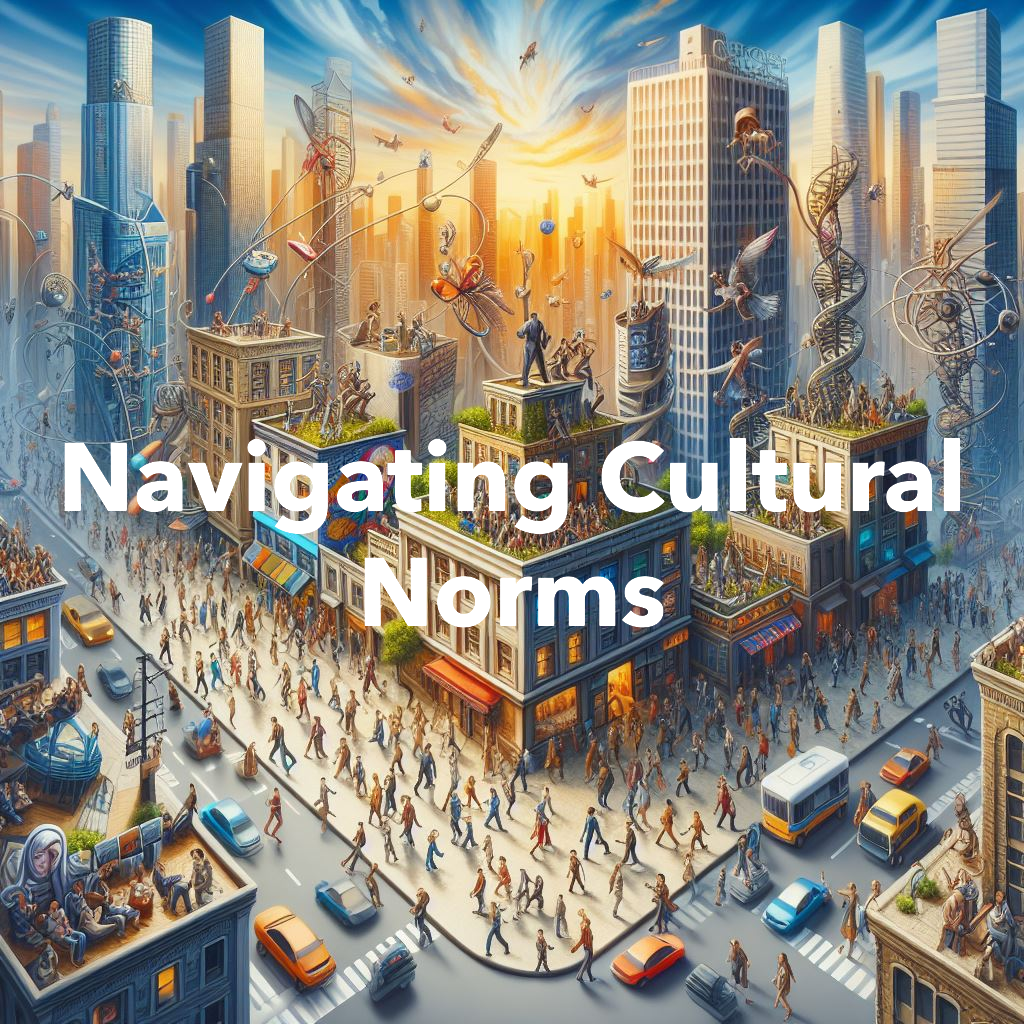Navigating Cultural Norms in Social Dynamics
Dynamics exist in all groups, whether they are work teams, social circles, or community organizations.
These dynamics influence how the group functions, makes choices and interacts with each other. One of the most critical factors impacting these dynamics is power and influence.
Group power dynamics can be complicated, subtle, and even invisible. Power is the ability to influence others or control outcomes, which can take many forms.
In certain circumstances, power is formalized by titles or positions of authority, such as team leader or corporate executive. However, authority might be informal, derived from skill, charisma, or social connections inside the group.
Understanding power dynamics is critical because they frequently define who has a voice in decision-making processes, whose perspectives are valued, and who ultimately controls the group's direction.
Power dynamics may be more visible in hierarchical structures, with those at the top holding tremendous influence over those below. Even in more egalitarian environments, power dynamics can emerge due to characteristics such as experience, personality, or social capital.
Influence is closely related to power, yet it acts slightly differently. While power frequently implies authority or control, influence is the ability to impact others' beliefs, behaviours, or decisions without having official power over them.
Influential group members may not occupy official leadership positions but have attributes or skills that allow them to influence others' viewpoints and behaviours.
Persuasion Is A Prevalent Form Of Influence.
People who are great communicators or have competence in a specific field may frequently persuade others to adopt their opinions or follow their recommendations. Furthermore, those with excellent interpersonal skills can exercise influence by establishing rapport, generating trust, and exhibiting empathy, making others more open to their ideas.
However, influence is only sometimes used favourably. In some circumstances, people may use manipulation or coercion to gain influence over others, taking advantage of power disparities for personal gain or to advance their goals.
Recognizing these negative influence strategies is critical for sustaining healthy group dynamics and ensuring that all members' perspectives are heard and valued.
Understanding Group Dynamics: The Role Of Power And Influence.
Furthermore, power and influence do not remain static; they can alter over time due to various variables, such as changes in group dynamics, external events, or individual acts.
For example, a new member with innovative ideas and strong leadership abilities may swiftly gain influence inside a group, challenging established power structures and influencing the group's direction.
To promote favourable group dynamics and collaboration, create an environment where authority and influence are dispersed equitably and transparently.
This could include fostering open communication, recognizing varied viewpoints, and allowing all members to contribute to decision-making.
Furthermore, leaders and facilitators should be aware of their power and influence and endeavour to utilize it properly, putting the collective good ahead of personal interests.
Understanding the dynamics of power and influence is critical for properly managing group interactions. Recognizing the many forms of power, understanding how influence works, and supporting fairness and transparency can help groups establish settings where all members feel empowered to contribute and collaborate towards common goals.
Cultural Norms Shape Social Cohesion And Inclusion.
Culture, the complex web of beliefs, values, and practices characterizing a group of people, is critical in determining social cohesiveness and inclusion.
Cultural norms, or the unwritten rules that govern behaviour within a culture, can significantly influence the building of a sense of shared identity and belonging within a society. However, understanding cultural differences can lead to friction and exclusion.
Building Social Cohesion Through Shared Norms and Common Ground
Cultural norms establish a common framework for social interaction, encouraging predictability and trust.
When people have comparable expectations for how to greet one other, what topics to discuss, and how to show respect, encounters run more smoothly, boosting cooperation and social cohesiveness.
Shared norms foster a sense of camaraderie and belonging.
Cultural behaviours, such as commemorating festivals or adhering to religious customs, help to reinforce a shared identity and strengthen the social fabric.
Queuing, for example, is a cultural norm in many societies that maintains public order and fairness. Similarly, welcomes such as handshakes and bows serve as nonverbal cues to acknowledge and respect people.
These shared norms lay the groundwork for social cohesion, allowing people from various backgrounds to handle everyday encounters effectively.
The Challenge of Difference: Managing Cultural Diversity
Cultural standards sometimes cause divisions. When people from various cultural origins confront foreign conventions, misunderstandings and conflicts might occur.
Simple behaviours, such as maintaining an adequate physical distance during a conversation, can be misconstrued, resulting in emotions of embarrassment or offence. More significant value disparities, such as gender roles or family structures, might cause conflict and impede social integration.
Furthermore, cultural norms might be exclusionary. Dominant cultural standards can marginalize minority populations who do not conform, potentially weakening social cohesiveness by causing isolation and a sense of belonging.
For example, a company that prioritizes informality and socializing after work may unintentionally exclude people from cultures that value a stricter separation of work and personal life.
Building Bridges: Cultural Sensitivity and Competence.
Cultivating cultural sensitivity and competency is critical to overcoming these divisions and establishing a truly inclusive society.
Cultural sensitivity is the knowledge and appreciation of cultural differences. It entails acknowledging that one's cultural standards are not universal and being willing to understand and appreciate the customs and beliefs of others.
Cultural competence extends beyond mere awareness. It requires the capacity to engage with people from many cultures properly. This requires learning about cultural norms and customs and practising cross-cultural communication and collaboration skills. Culturally competent people can change their communication styles and behaviours to foster a more inclusive environment.
Examples of Building Cultural Competence
Incorporating intercultural education into school curricula can significantly assist students in becoming culturally competent. This can include learning about different cultures, celebrating cultural diversity through events, and allowing kids from all backgrounds to interact and form relationships.
Similarly, workplaces can foster cultural competence by offering diversity training to staff. This training can assist employees in appreciating the value of cultural sensitivity and provide them with tools to handle cultural differences effectively.
By building cultural awareness and competency, we may create cohesive and inclusive societies, with people of various backgrounds feeling valued and respected. As a result, everyone benefits from a more robust and dynamic social fabric.
Regarding social cohesiveness and inclusiveness, cultural norms can be beneficial and detrimental.
They can lay the groundwork for a common identity and cooperation but create obstacles and feelings of exclusion. By developing cultural sensitivity and competency, we may harness the power of cultural norms to create more inclusive and cohesive societies in which everyone feels included.
The post The Effects of Cultural Norms on Interpersonal Relations appeared first on Ezi Gold.
The Article The Effects of Cultural Norms on Interpersonal Relations Was Found On https://limitsofstrategy.com


Comments are closed